Lavender chickens are unique and beautiful birds.
The unique color of chicken plumage is sure to attract attention.
These fowl hold a rare genetic trait producing lavender hues in their plumage.
There is no question why lavender chicken breeds and other colored chickens have grown immensely in popularity over the years.
Chickens with unique and colorful patterns make an excellent addition as an ornamental breed to any backyard coop, farm, or homestead.
We’ll go over nine lavender chicken breeds you must see.
Table of Contents
ToggleLavender Wyandotte
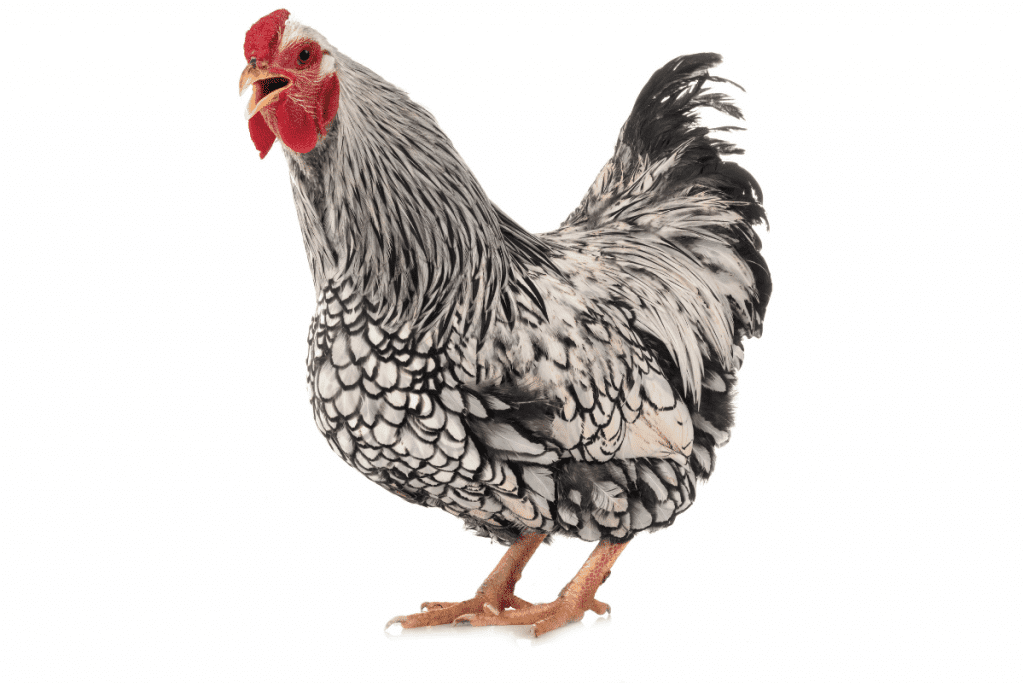
The Wyandotte chicken breed is a popular option among chicken keepers.
This dual-purpose breed lays around 200 eggs a year, making them a great option for a backyard coop or homestead.
The Wyandotte breed comes in a Bantam variety as well.
This chicken breed is excellent for those living in colder climates.
The unique rose-shaped comb of the Wyandotte chicken makes them significantly less prone to frostbite in the winter months compared to other chicken varieties.
This breed of chicken is known for being excellent when it comes to foraging.
Many people even keep Wyandottes as pets due to their pleasant and friendly disposition.
The Lavender varieties of the Wyandotte take all the benefits of the breed and make them better with their beautiful plumage caused by the lavender gene.
Lavender Wyandottes are bred to carry beautiful feathers while maintaining their reputation as excellent egg-laying chickens.
The Wyandotte also makes our list of the largest chicken breeds.
Lavender Ameraucana
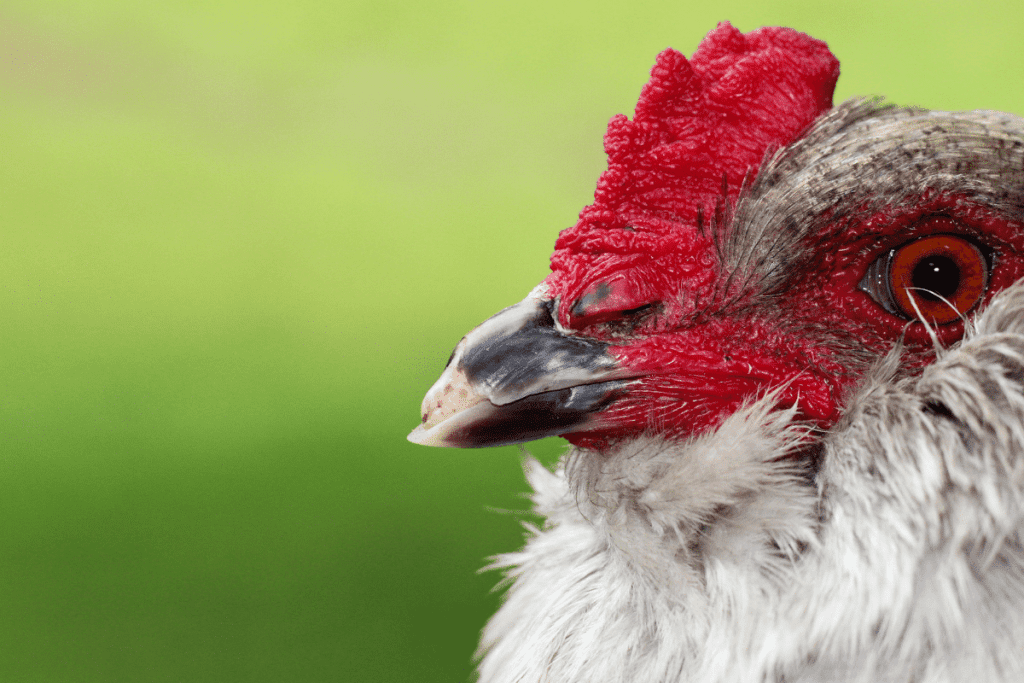
Ameraucanas are another popular choice for backyard farmers.
They are excellent dual-purpose birds.
The decent dual-purpose chicken has a small stature, making them a great choice for those with limited space to roam and forage.
They weigh between 5.5 and 6.5 pounds, while bantam varieties weigh 1.5-1.9 pounds.
Due to their small size, they are not a top contender for meat.
The breed is known for its cold tolerance and hardiness.
Visually, the Ameraucana chicken has a fierce look.
They also are one of the fun breeds with blue eggs.
The Araucana is a descendant of the Ameraucana.
Breeders crossed the Araucanas to fix a trait responsible for their chicks frequently dying before hatching.
The resulting crossbreeding gave us Ameraucanas with blue eggs.
This means you will have beautiful colors in the plumage and eggs.
Ameraucanas come in many different colors, including an enchanting lavender color variety.
The cold-hardy, dual-purpose birds make an excellent addition to any farm.
The Lavender variety of Ameraucana has a calm and friendly disposition and a watchful eye.
The Lavender Ameraucana lays between 175 and 200 eggs annually, making them a fantastic dual-purpose chicken.
Learn when Ameraucana chickens start laying eggs and other questions in our guide here.
Lavender Belgian Bearded d’Uccle Bantam
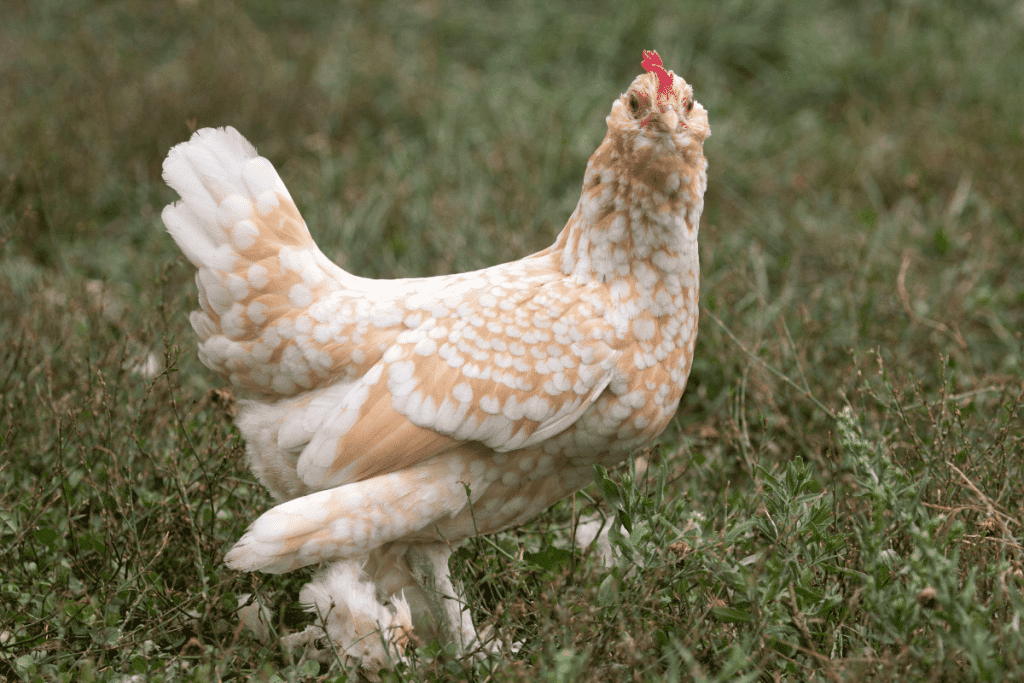
The Belgian Bearded d’Uccle Bantam is a breed of chicken originating from Brussels.
The breed is known for its beautiful plumage, which extends down their legs onto their feet.
The Belgian Bearded d’Uccle Bantam, also called the Barbu d’Uccle, is known for its sweet and kind disposition.
The Barbu d’Uccle is a beloved European chicken breed with its fluffy bodies.
Some people find the fluff of feathers around their necks and legs to resemble a beard and boots.
The Belgian Bearded d’Uccle is a great addition to a small homestead or backyard coop.
They lay roughly 100 eggs annually, perfect for anyone looking for a steady supply of eggs but not necessarily a surplus.
The Belgian Bearded d’Uccle chicken breed comes in a wide variety of plumage color patterns.
The Lavender Barbu d’Uccle takes all the breed’s beauty to the next level with the unique lavender plumage.
A Lavender Barbu d’Uccle is the perfect choice for anyone with a small backyard coop looking to add a pop of color to their flock.
Lavender Barbu d’Anvers
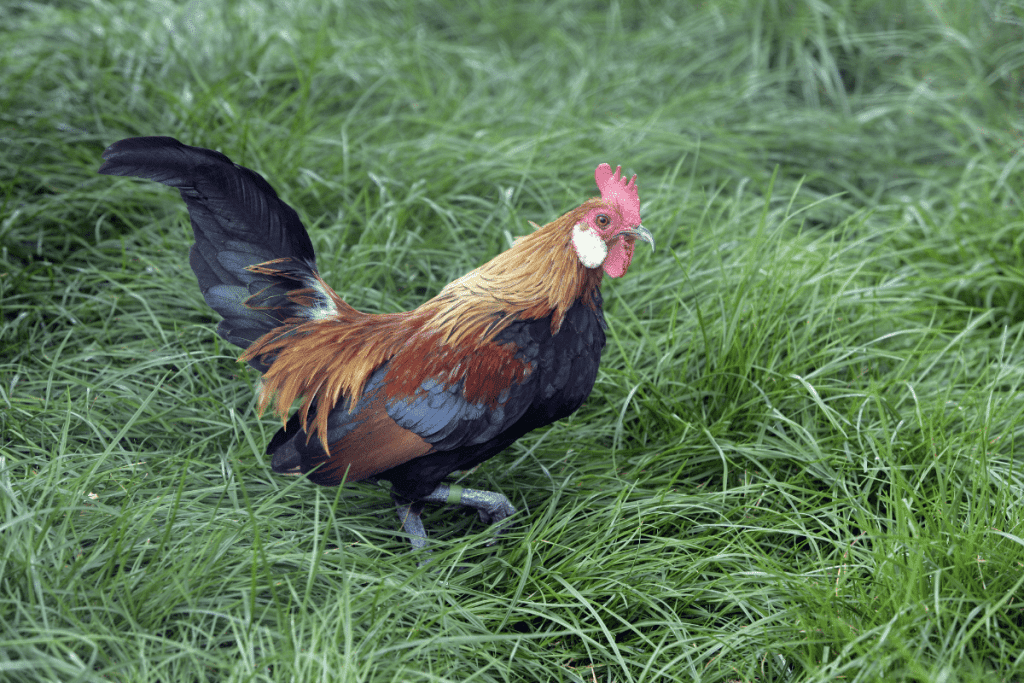
The Barbu d’Anvers is a smaller chicken breed from Belgium.
This breed of chicken is mostly bred for ornamental purposes or as exhibition birds.
However, some people also keep them as pets or part of their chicken coop.
The small and beautiful chickens are excellent foragers who love to free-range.
We highly recommend allowing your Barbu d’Anvers time to roam and forage throughout the property to keep them happy.
Many people even think this helps them live longer.
The Lavender Barbu d’Anvers is a small fowl with beautiful plumage.
The breed of chicken comes in a wide variety of colors, but the Lavender chickens are sure to turn heads.
They are not known for being excellent layers and average about 3 eggs per week.
This makes them a good fit for small families who aren’t looking for copious amounts of eggs all the time.
Despite their egg-laying number, the Lavender hens make excellent mothers and tend to be broody.
Lavender Orpington
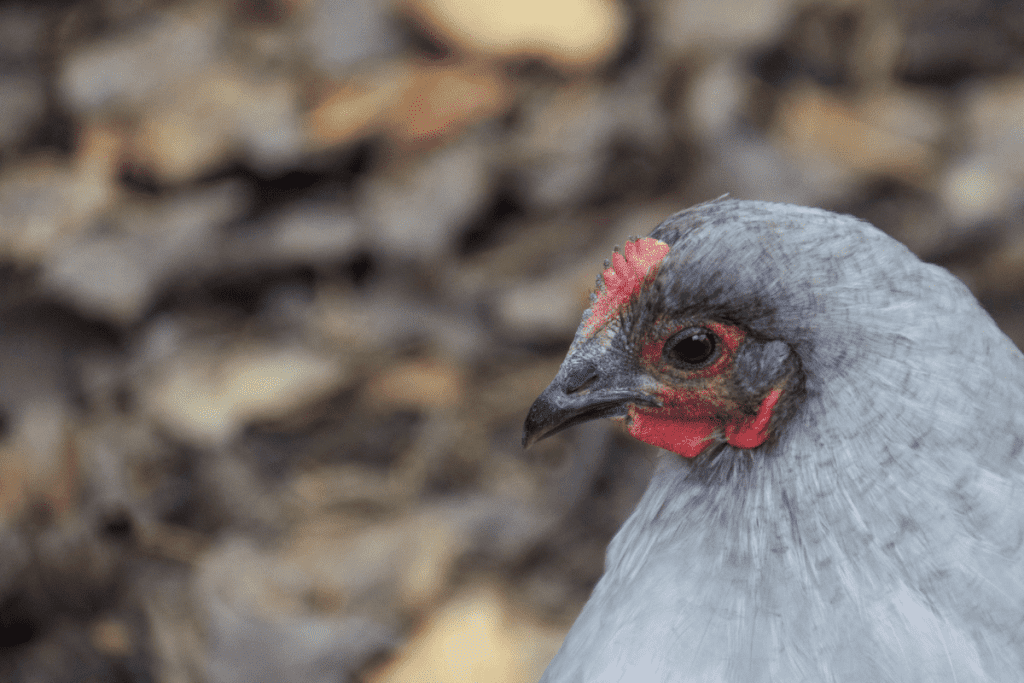
Orpingtons are a very popular dual-purpose breed.
The Orpington chicken is known for being buff, fluffy and large.
The breed originated in the 1800s, with lavender varieties joining the Orpington family in the mid-1900s under the whims of Priscilla Middleton.
The breed was intended to be an excellent dual-purpose breed capable of prolific egg-laying and producing a lot of meat.
Orpingtons certainly do this with their large size and excellent egg production capacity.
The Orpington chicken lays about 200 eggs each year, but some are known to lay upwards of 340 eggs annually.
The Lavender Orpington chickens are beautiful birds with lovely plumage.
The large and fluffy build of the Orpington breed allows the lavender feathers to shine.
They tend to get their build from buff types. Lavender Orpington chickens are self-blue.
This means they breed true.
The entire clutch will produce lavender chicks if you cross a Lavender hen with a Lavender rooster.
Related: How loud and noisy are Buff Orpington chickens?
Lavender Dutch Bantam
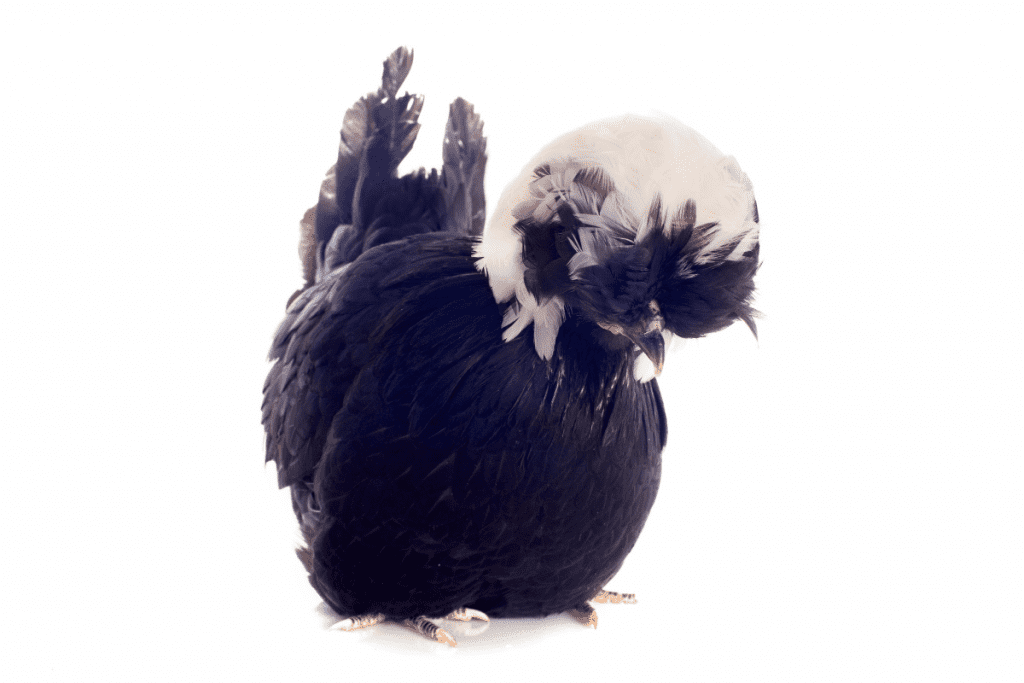
The Dutch Bantam breed is a true bantam breed originating from the Netherlands.
True bantams are not bred from larger breeds.
They are naturally small fowl.
The ornamental breed is mainly bred for exhibition, although they are also great additions to small backyard flocks.
The small bodies and decent-sized wings of the Dutch Bantam chicken allow them to fly a bit more than other breeds of domesticated chickens.
Bantam-sized birds are excellent for backyard keepers looking for a modest egg-laying bird with limited space.
The Dutch Bantam chickens lay about 160 eggs annually.
However, they are significantly smaller than eggs from commercial hatcheries.
The Lavender Dutch Bantam is an adorable variety of this unique breed.
The color produced by the lavender is one of 29 different recognized color shades bred in the Dutch Bantam breed.
If you have limited space and seek a small yet productive lavender chicken, the Lavender Dutch Bantam is a fantastic choice.
Lavender Silkie
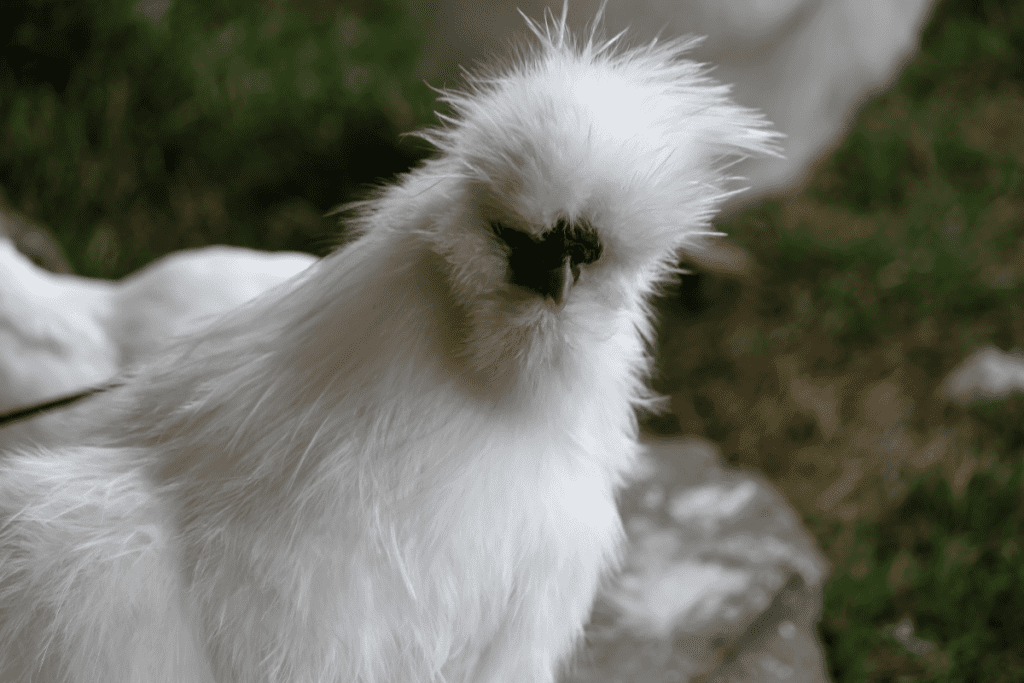
Silkies are a beloved breed among chicken enthusiasts.
Their unique plumage makes them immediately recognizable.
Many backyard chicken keepers seek this breed to add to their coop.
The Silkie chicken dates back to Ancient China and has grown immensely popular over the centuries.
Their unique plumage covers everything but their eyes and the bird’s beak.
With the soft and silky feel of the feathers, the chicken is beloved by many.
They are not particularly good layers but do tend to brood.
On average, a Silkie hen lays about 100 eggs annually.
Since they are excellent brooders, many farmers incorporate them into their flock to make up for those hens who are less likely to brood on their eggs.
The Lavender Silkie came about in the 2000s.
The unique plumage of the bird makes an excellent canvas for the Lavender color.
Lavender Silkies tend to be very small and fall under the Bantam classification.
If you want a chicken sure to attract attention, we recommend adding a Lavender silkie to your backyard chicken flock.
Related: Why do Silkie chickens fight?
Lavender Booted Bantam
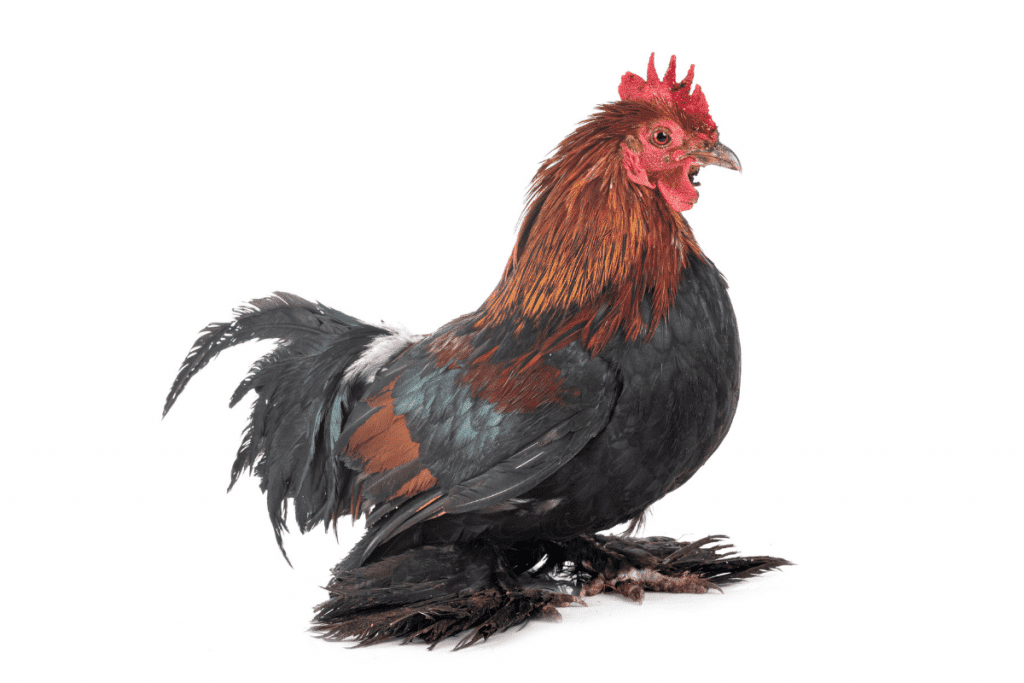
The Lavender Booted Bantam is a European breed of chicken.
It is a true bantam as it was not bred from a larger chicken breed.
The Booted Bantam has ancestors in various European countries, including England, Belgium, the Netherlands, and Germany.
Chicken owners have kept the Booted Bantam for centuries, sometimes called feather-footed bantams.
The Booted Bantam has been crossbred to produce other Lavender chicken breeds like the Bardu d’Anvers and the Barbu d’Uccle.
The Lavender Booted Bantam has plumage down its shanks and covers its feet, making it a very attractive bird.
It is easy to see where this breed gets its name as the feathers look like little boots on their feet.
Like many other bantam breeds, the Lavender Booted Bantam is primarily kept for show, although they lay a modest number of eggs, usually about 100 annually.
Additional reading: Are Booted Bantams Noisy And Loud?
Lavender Pekin Bantam
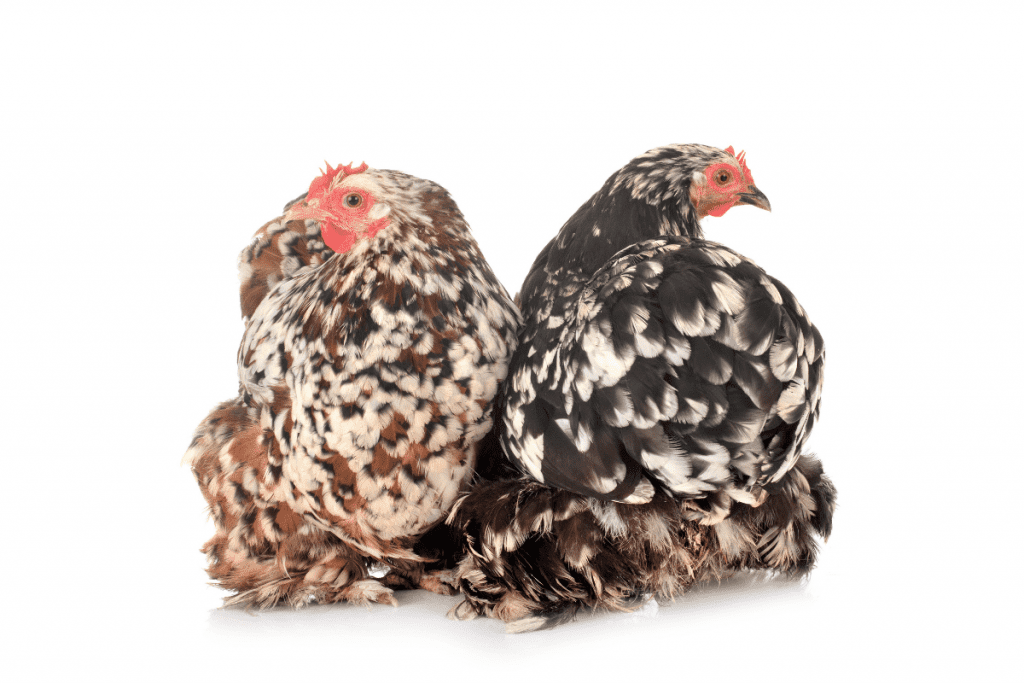
The Pekin Bantam is another true bantam breed.
These small fowl reach only 11″ inches in height as adult birds.
Like booted chicken breeds, the Pekin Bantam has feathers down its legs and covering its feet.
This rare breed of chicken has unique variations in its plumage as well.
The feathers come in both straight and frizzled varieties, which adds to the rarity of this breed’s looks.
The Bantam Lavender Pekins are not a very hardy breed.
They require adequate warmth during the winter months.
They are not known for their egg production; some only produce 50 eggs annually.
However, their beautiful looks, especially with Lavender varieties, make them excellent choices for show and exhibition as designer birds.
Some people consider this breed to be one of the sweetest chickens around, making it a great bird for children.
Their kind and calm personality make these friendly birds popular choices to be kept as pets.
How useful was this post?
Click on a star to rate it!
We are sorry that this post was not useful for you!
Let us improve this post!
Tell us how we can improve this post?
